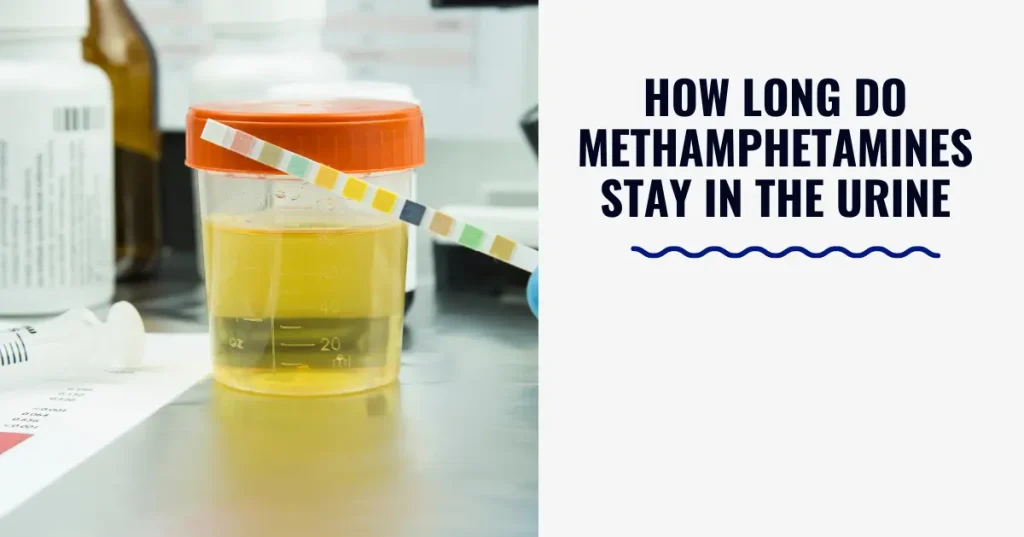Methamphetamines are man-made drugs that make you feel super awake and energetic. They come as a white powder and can be swallowed, snorted, smoked, or injected. People use them to get high, but they can be addictive and cause serious health problems. Using them for a long time can mess up your body and mind.
Methamphetamines make you feel super energized and happy, but they can mess up your body and mind. They can make your heart race, blood pressure, and temperature rise. Long-term use can cause paranoia, hallucinations, addiction, and other serious health problems. They might make you feel good for a while, but they can harm you in the long run.
Pharmacokinetics of Methamphetamines
Pharmacokinetics of methamphetamines refers to how the drug moves through the body.
Absorption
When you take methamphetamine, whether by swallowing, snorting, smoking, or injecting it, it quickly gets into your bloodstream. Once in your bloodstream, methamphetamine travels throughout your body, reaching different organs and tissues. The drug can also cross into your brain, where it affects your nervous system, leading to its stimulating effects. The speed at which methamphetamine is absorbed depends on how you take it and can influence how quickly you feel its effects.
Distribution
After methamphetamine enters your bloodstream, it spreads throughout your body. This means it reaches various organs and tissues, including your brain, muscles, and organs. The distribution of methamphetamine throughout your body allows it to exert its effects on different systems, such as the central nervous system, which controls your thoughts, movements, and sensations. The distribution process helps explain why methamphetamine affects your entire body and can lead to both physical and psychological changes.
Metabolism
Once methamphetamine is in your body, it undergoes a process called metabolism. Metabolism mainly occurs in the liver, where enzymes break down methamphetamine into smaller compounds. These smaller compounds are then processed further and eventually eliminated from your body. The metabolism of methamphetamine plays a crucial role in how long the drug’s effects last and how it is eventually cleared from your system.
Excretion
After methamphetamine is broken down in the body, the resulting compounds need to be removed from your system. The primary route of elimination for methamphetamine and its metabolites is through urine. A small portion may also be excreted in feces and sweat. The excretion process is how your body gets rid of methamphetamine and its byproducts, eventually clearing it from your system.
Factors Affecting Detection Time
- Dosage: The amount of methamphetamine you take matters. If you take a lot, it will stay in your body longer because your body needs more time to deal with it. So, higher doses mean longer detection times in drug tests.
- Frequency of Use: How often you use methamphetamine is important. If you use it a lot, it can pile up in your body, making it stick around for longer periods. This means that if you’re a regular user, methamphetamine might show up in drug tests for a longer time compared to someone who uses it less often.
- Route of Administration: How you use methamphetamine affects how long it stays in your body. If you swallow it, it might take longer to show up in tests compared to if you smoke, snort, or inject it. This is because different ways of taking methamphetamine impact how quickly it gets into your bloodstream and how your body breaks it down.
- Individual Variations: Everybody’s body is different. So, factors like how fast your body breaks down drugs, how hydrated you are, and how healthy you are can change how long methamphetamine sticks around. This means that even if two people take the same amount of methamphetamine, it might show up in drug tests for different lengths of time.
- Metabolism Rate: Some people’s bodies break down methamphetamine faster than others. If you’re one of these people, methamphetamine might not hang around in your body as long as it does for someone whose body breaks it down slowly. This is because your body’s metabolism, or how fast it processes things, affects how quickly methamphetamine is removed from your system.
- Hydration and pH Levels: Drinking enough water and having the right pH level in your body can help your kidneys work better. This can help your body get rid of methamphetamine faster, shortening the time it stays in your system. So, staying hydrated and maintaining a balanced pH level can affect how long methamphetamine shows up in drug tests.
Detection Methods
- Urine Testing: When you go to the doctor’s office, they might ask you to pee in a cup. This pee is then checked to see if you’ve used methamphetamine lately by looking for methamphetamine or its byproducts in it. Urine tests are commonly used because they’re easy and can show recent drug use.
- Blood Testing: Sometimes, they might need to take a little bit of blood from your arm with a needle. This blood is checked to see if methamphetamine is in your system. Blood tests are more direct and are often done in emergencies or when they need to know right away if you’ve used methamphetamine.
- Saliva Testing: To do this test, they simply swipe a cotton swab inside your mouth. They then check the swab to see if it has methamphetamine on it, indicating recent use. Saliva tests are quick and easy but might not be as accurate as other methods.
- Hair Testing: For this test, they snip a small piece of hair from your head. This hair is then checked for methamphetamine and its byproducts. Hair tests can show if you’ve used methamphetamine in the past few months, but they take longer to get results.
- Sweat Testing: You wear a patch on your skin for about a week, and the patch collects your sweat. Then, they check the patch to see if it has methamphetamine in it, showing recent or longer-term drug use. Sweat tests give a broader picture of drug use over time.
Each type of test has its advantages and disadvantages, like how quickly you get results. How comfortable the test is, and how sure you need to be of the results.
Detection Windows of Methamphetamines
- Urine Detection Time: When you pee in a cup, they can find methamphetamine in it if you’ve used the drug recently. Usually, it can show up in urine tests for about 1-4 days after using methamphetamine. This time frame can vary based on how much you take and how often you use the drug.
- Blood Detection Time: If they take a little blood from your arm, they can check it to see if methamphetamine is in your system. Generally, methamphetamine can be detected in blood for about 1-3 days after using it. Blood tests are more direct and can show recent drug use.
- Saliva Detection Time: By swiping a cotton swab inside your mouth, they can check to see if there’s methamphetamine in your saliva. Usually, methamphetamine can be detected in saliva for about 1-4 days after using it. Saliva tests are quick and easy to do.
- Hair Detection Time: When they snip a piece of your hair, they can check it to see if you’ve used methamphetamine in the past few months. Typically, methamphetamine can be detected in hair for up to 90 days after using it. Hair tests take longer to get results but can show longer-term drug use.
- Sweat Detection Time: If you wear a patch on your skin for about a week, they can check it to see if methamphetamine is in your sweat. Methamphetamine can be detected in sweat patches for up to a week, giving a broader picture of drug use over time. Sweat tests can show recent or longer-term drug use.
Factors Influencing Accuracy of Testing
Laboratory Procedures
The way tests are done in labs matters. It includes making sure the equipment is set up right, following strict rules for handling samples and having skilled lab workers. Doing everything correctly helps make sure the results are reliable.
Cross-Reactivity
Sometimes, other things can trigger a positive result in drug tests even if methamphetamine isn’t there. This happens because some substances are similar to methamphetamine and confuse the test. Understanding these substances and using extra tests can help avoid mistakes.
Sensitivity and Specificity of Testing Kits
Tests need to be able to find even tiny amounts of methamphetamine accurately (sensitivity) without mistakenly finding other things as methamphetamine (specificity). Having tests that are both sensitive and specific makes the results more reliable.
Sample Integrity
Keeping samples clean and safe is super important. If samples get contaminated or damaged, the results can’t be trusted. So, following the right procedures for collecting, storing, and handling samples is key for accurate testing.
Interference from Medications or Substances
Some medicines or substances can mess up drug tests by either showing up as methamphetamine or hiding it. Being honest about what medicines or substances you’re taking helps get the right results.
Quality Control Measures
Labs have to make sure they’re doing everything right to get accurate results. This means regularly checking equipment, doing tests to make sure everything’s working well, and following strict rules. These checks help catch any mistakes and make sure the results are reliable.
Legal and Employment Implications
- Workplace Drug Testing Policies: Some jobs require workers to take drug tests, including tests for methamphetamine. If you fail a drug test at work, you could get in trouble, like being disciplined or losing your job.
- Legal Consequences of Positive Results: If you test positive for methamphetamine, you might face legal problems. This could mean paying fines, being on probation, losing your driver’s license, or even going to jail, depending on the laws where you live.
- Challenges to Employment Opportunities: If you’ve tested positive for methamphetamine in the past, it might be harder to find a job in the future. Some employers won’t hire people who have used drugs, especially for certain jobs or if they need security clearance.
- Rehabilitation Requirements: Sometimes, if you test positive for methamphetamine, you might have to go to rehab or get help for drug addiction. This could be part of your punishment from the law or your job. If you don’t follow these rules, you could face more problems.
- Stigma and Discrimination: People who’ve used methamphetamine and tested positive might face discrimination or be treated badly by others. This can make life harder and affect how they feel about themselves.
Overall, testing positive for methamphetamine can have serious consequences, both legally and in terms of employment. It’s important to understand these risks and to avoid using drugs or get help if you need it.
Managing Methamphetamine Detection
- Strategies to Clear Methamphetamine from the System: Some people may try different ways to get methamphetamine out of their bodies quickly, like drinking lots of water or using detox products. However, these methods might not always work well and can even be harmful.
- Seeking Professional Help: If someone is struggling with methamphetamine use, it’s important to get help from doctors, counselors, or addiction specialists. They can make personalized plans to help with addiction and provide support and resources for recovery.
- Understanding Detection Risks: It’s crucial to know the risks of using methamphetamine and getting caught. This includes legal trouble, losing a job, or harming health. Knowing these risks can help someone make better choices.
- Developing Coping Strategies: Learning healthy ways to deal with stress, cravings, and situations that make someone want to use methamphetamine is key to staying clean. This might mean going to therapy, using relaxation techniques, or finding hobbies to stay busy.
- Building a Support Network: Surrounding oneself with supportive friends, family, or others who understand addiction can make a big difference. Having people to talk to, lean on, and share experiences with can help someone stay on track with recovery.
Overall, managing methamphetamine detection involves taking steps like seeking help, and understanding risks. Developing coping strategies, and building a support network to overcome addiction and live a healthier life.
Conclusion
Methamphetamines stay in your system varies based on factors like dose and how often you use it. Urine tests can detect methamphetamine for 1-4 days, blood tests for 1-3 days, and saliva tests for 1-4 days. Hair tests can show use for up to 90 days, while sweat patches worn for a week can provide a broader picture.
Knowing these factors and the potential consequences of testing positive is important. It’s crucial to make wise choices about drug use and seek help if needed. Developing healthy ways to cope with cravings and having a supportive network is key in managing detection and working towards recovery.



